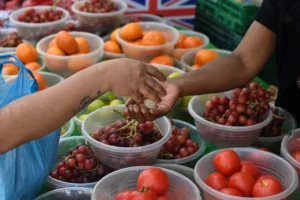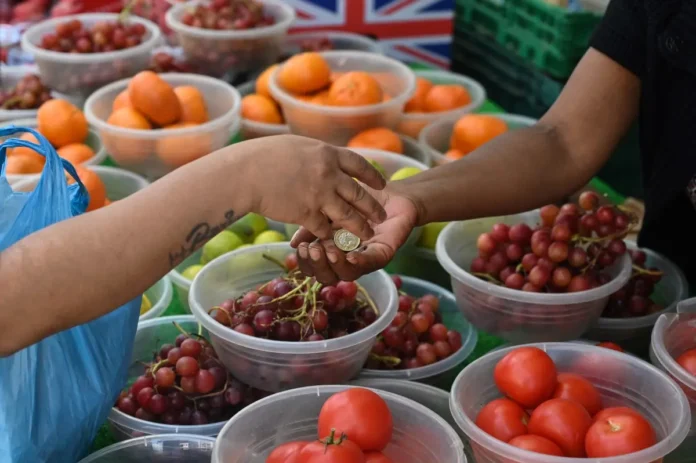Britain exited a shallow recession with better-than-expected growth in the first quarter, official data showed Friday, in a boost to embattled Prime Minister Rishi Sunak ahead of this year’s election.
Gross domestic product expanded 0.6 percent in the first three months of this year, the Office for National Statistics (ONS) said, noting strong growth in service industries and car manufacturing.
That beat market expectations of 0.4 percent and marked the strongest performance since the fourth quarter of 2021, helping send London’s stock market to yet another record peak.
Sunak — whose governing Conservatives are trailing the main opposition Labour Party before a general election and suffered heavy losses in English local polls last week — has made economic growth one of his top priorities.
The economy had suffered two successive quarters of slight contraction in the second half of last year, meeting the technical definition of a recession on the back of elevated inflation and a cost-of-living crisis.
“There is no doubt it has been a difficult few years, but today’s growth figures are proof that the economy is returning to full health for the first time since the pandemic,” said finance minister Jeremy Hunt.
“We’re growing this year and have the best outlook among European G7 countries over the next six years,” he insisted.
However, Labour finance spokesperson Rachel Reeves slammed the government’s stewardship of the economy, which has been blighted by the cost-of-living crunch.
“From no growth to low growth — is that really the scale of the Conservatives’ ambitions? Food prices are still high, families are paying more on their monthly mortgage bills and working people are worse off,” said Reeves.

Friday’s data came one day after the Bank of England kept its main interest rate at a 16-year high, but hinted at a cut over the summer as inflation cools further — and forecast emergence from recession in a bright outlook.
“The UK is clearly entering a more optimistic period,” noted Richard Carter, head of fixed interest research at Quilter Cheviot.
“The government will be hoping to take advantage of this in the lead up to the general election, however, there are still factors, such as productivity and manufacturing struggles, that will weigh on economic growth for some time.”
GDP shrank by 0.3 percent in the fourth quarter of 2023 after contracting 0.1 percent in the prior three months, the ONS confirmed Friday in unrevised data.
The Bank of England on Thursday left borrowing costs at 5.25 percent, the highest level since 2008, which hurts borrowers but boosts savers.
“We need to see more evidence that inflation will stay low before we can cut interest rates,” said BoE governor Andrew Bailey.
Signalling that a rate cut was on the horizon, two members of the bank’s nine-strong Monetary Policy Committee (MPC) voted at the May meeting for interest rates to be cut by 0.25 percentage points.
The BoE maintained borrowing costs for a sixth meeting in a row, mirroring a wait-and-see approach by the US Federal Reserve and European Central Bank.
Hunt urged the BoE to refrain from cutting rates too soon, saying he would “much rather” policymakers “wait until they are absolutely sure inflation is on a downward trajectory than rush into a decision that they had to reverse at a later stage”.
UK annual inflation fell less than expected in March — the last official reading — to 3.2 percent.
This is well down compared with late 2022, when the rate reached a four-decade high above 11 percent as energy and food prices soared following Russia’s invasion of Ukraine.




